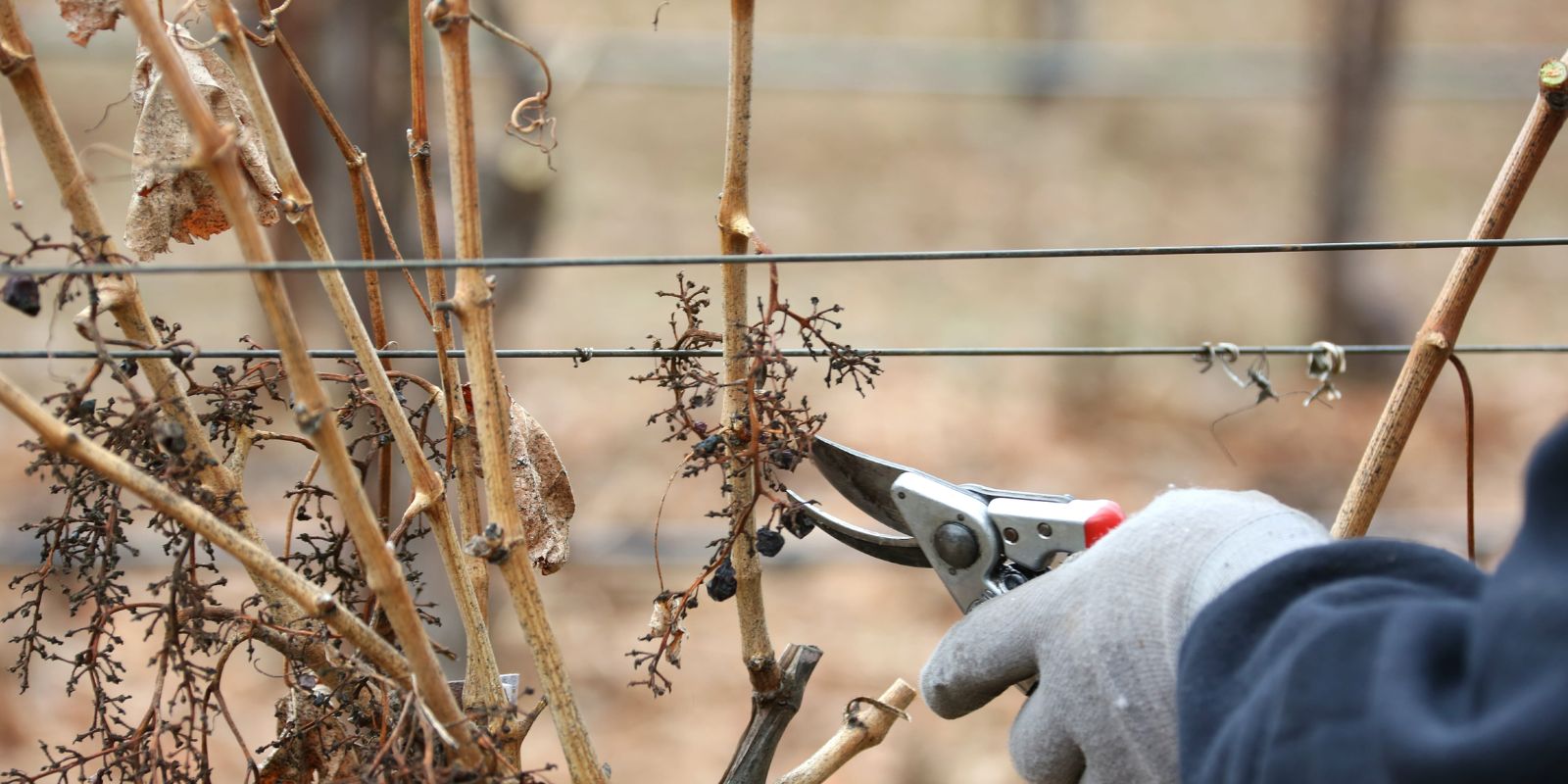Pruning grapevines is a critical practice for any grape grower aiming to enhance fruit quality and optimize sugar development. Proper pruning not only improves the health and productivity of the vines but also ensures that the grapes develop the desired sweetness and flavor. In this guide, we’ll explore the essential techniques and timing for pruning grapevines, providing you with the knowledge needed to achieve a bountiful and sweet harvest.
The Importance of Pruning for Sugar Development
Pruning grapevines serves several key purposes that directly impact the quality of the grapes:
- Enhances Sunlight Exposure: Proper pruning helps to open up the vine canopy, allowing sunlight to reach more of the fruit-bearing shoots. Increased sunlight exposure is crucial for sugar development, as the grapes use sunlight to convert carbohydrates into sugars.
- Improves Airflow: By thinning out excess foliage and removing dead or diseased wood, pruning improves air circulation around the vines. Better airflow reduces the risk of fungal diseases and promotes healthier, more robust fruit.
- Focuses Energy: Pruning directs the plant’s energy into fewer, healthier shoots. This concentration of resources ensures that the remaining grapes receive more nutrients and sugars, resulting in higher quality fruit.
- Promotes Healthy Growth: Regular pruning encourages new growth and maintains the overall shape and structure of the vine, leading to more productive and manageable plants.
Timing Your Pruning
Prune During Dormancy: The best time to prune grapevines is during their dormant period, which occurs in late winter to early spring before new growth begins. Pruning during this time allows you to make the necessary cuts without disrupting the vine’s growth cycle and minimizes stress on the plant.
Wait Until After Hard Frost: Ensure that the risk of hard frost has passed before pruning. Late frost can damage newly cut vines and negatively impact the vine’s health and fruit production.
Essential Pruning Techniques
1. Remove Dead and Diseased Wood:
- Inspect the Vines: Begin by examining the grapevines for any dead, damaged, or diseased wood. This includes canes that are brittle, discolored, or show signs of disease.
- Make Clean Cuts: Use sharp pruning shears or loppers to make clean cuts just above a healthy bud or branch. Avoid tearing or crushing the wood, as this can introduce pathogens.
2. Thin Out Excess Growth:
- Identify Overcrowded Areas: Look for areas where multiple canes are crowded together or where growth is excessively dense.
- Select and Remove: Choose the weakest or least productive canes to remove, leaving the strongest and most promising ones. This helps to direct the vine’s energy into the remaining canes and improves fruit quality.
3. Train Vines for Optimal Growth:
- Use Trellises or Supports: Guide the vines onto trellises, arbors, or other supports to encourage upward growth and maximize sunlight exposure.
- Attach Canes Properly: Secure the selected canes to the support structure using soft ties, ensuring they are evenly spaced and positioned for optimal light and airflow.
4. Maintain Proper Pruning Techniques:
- Make Accurate Cuts: Cut just above a bud or branch, making sure to leave a short stub (1/4 inch) to avoid leaving stubs that can harbor disease.
- Avoid Over-Pruning: Be careful not to remove too much foliage or too many canes, as this can weaken the vine and reduce overall productivity.
5. Manage New Growth:
- Monitor and Adjust: After the initial pruning, continue to monitor the vine’s growth throughout the season. Remove any additional unwanted growth or suckers that appear, focusing the plant’s energy on fruit development.
Practical Tips for Successful Pruning
1. Use the Right Tools: Invest in high-quality pruning shears, loppers, and a saw if necessary. Sharp tools ensure clean cuts and reduce the risk of injury to the vine.
2. Prune in Stages: If you have a large number of vines, consider pruning them in stages rather than all at once. This approach helps you manage the workload and allows for better observation of each vine’s unique needs.
3. Keep Records: Maintain records of your pruning activities, including dates and the amount of growth removed. This information can be valuable for future reference and helps you track the impact of your pruning practices.
4. Learn from Experience: Observe the results of your pruning efforts over time. Note how different pruning techniques affect grape quality and yield, and adjust your methods accordingly.
5. Seek Professional Advice: If you’re new to pruning or dealing with a large vineyard, consider consulting with a professional horticulturist or viticulturist. Their expertise can provide valuable insights and help you refine your pruning techniques.
Conclusion: Achieving Sweet Success with Pruning
Pruning grapevines for better sugar development is an essential practice for any grape grower aiming to produce high-quality fruit. By understanding the timing and techniques of pruning, you can enhance sunlight exposure, improve airflow, and focus the vine’s energy on fewer, healthier shoots. Implementing these practices will not only boost the sugar content in your grapes but also contribute to the overall health and productivity of your vineyard.
Embrace the art of pruning to unlock the full potential of your grapevines and enjoy a sweeter, more flavorful harvest. With careful attention and practice, you’ll be well on your way to achieving grape-growing success. 🍇

